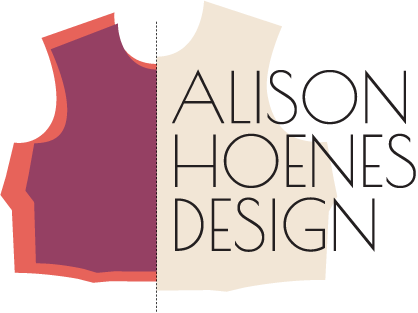When doing anything for the first time – including starting a fashion brand, it is inevitable that mistakes can be made. The good news is that many potential mistakes can be avoided. These are the four most common mistakes I’ve seen new brands make and what you can learn from those mistakes in order to avoid them in your business.
Launching with a huge collection
Looking at 30, 50, or even 70 piece runway collections, it is easy to think that all fashion brands need to launch massive collections across multiple product categories multiple times a year. However, when you are just starting a brand, a large collection can be detrimental. Product development alone, not to mention production, is not cheap and requires you to invest money months in advance of making any sales. If you don’t have the financial resources and full team of a big brand, then a large collection can spread your resources too thin. You also run the risk of producing all this inventory and then realizing based on customer feedback, that you’d like to make changes.
Instead of starting with a whole collection, focus on a select capsule of strong pieces that show your brand’s DNA in a way that leaves your customers excited for more. The exact number of pieces depends on your brand and product, but I’ve seen many brands launch successfully with a 3-5 piece collection. Note, this is 3-5 pieces not 3-5 looks. It may just be a dress, top, and pants, or even just 3 blouses. Sometimes one key piece – perhaps in a few colorways – is enough to test your brand concept and showcase what’s to come without straining your finances.
Not being clear on who your customer is
You know I always talk about this, but it is so key to so many things in a fashion business! When you aren’t sure who you are designing and making clothing for, decisions about what to design, how many to make, what fabric to use, what price to charge, what sizes to offer, what to write on your sales pages, what social media platforms to be on for your brand, and many more are much more difficult to make. And these aren’t questions you want to just guess the answers to.
Instead of jumping into design and production without a clear customer in mind, spend time researching, finding, and listening to your customer first. Customer research is always ongoing, but taking time at the beginning of your brand to get clear on your customer will pay off in the long run, I promise. Once you know where your customers hang out (online and in real life), what they care about, what problems they have, and why they might want to buy from your brand, then you can start creating with a clear goal that will guide all the design and business decisions.
Inappropriately costing your products
Costing apparel products is an area I see many designers and new brands struggling with. The vast majority of the time, their prices are set too low. You may not feel the effects right away if you are getting steady sales, but improperly costed and priced products will hurt your business in the long run. You may be breaking even, but your business probably won’t be making any profits. You may not be able to afford to pay yourself as the owner. When you want to start working with a factory instead of sewing everything yourself, you’ll find that you can’t afford it. You won’t make enough in sales to fund the development and production of your next collection.
The way to avoid this and to build a healthy business is to cost your pieces appropriately for your cost of goods and for the value they are to your customers. Materials cost tends to be the easiest as it is fairly straightforward. The costs that I see designers forgetting to include when costing and pricing their products is the cost of their own labor and time as well as development. Your time as the business owner – and certainly your time if you are sewing your products – is a cost to the business. Factoring in this cost when setting your prices even if you aren’t actually paying yourself a salary yet will make sure that you aren’t setting your prices artificially low.
Having unrealistic timeline expectations
Launching two collections a year means each collection only takes 6 months to make, right? Unfortunately, this is not the case. If you’ve already started your fashion brand, you know that there are more steps involved than what you thought and each one takes longer than you anticipated (especially in our world of out-of-stock materials and shipping delays). For your first collection, there are more things that need to be done than for subsequent collections. Deciding on branding, labels, and packaging and onboarding to a factory are things that can take time during your first collection that you need to account for in your timeline. Once you’ve established these things, future collections can be faster, but the reality is that while you are selling one collection, production for the next collection is being made, and you are already working on research/design/sourcing for the collection after that.
Instead of thinking everything will come together and you’ll be selling your designs in a matter of a few months, plan out realistic development and launch timelines so that you’ll be able to meet deadlines and have each collection ready to sell in the appropriate season. I recommend new brands estimate at least a year before they can launch. Depending on your brand and your availability, this can be a multi-year process to initial launch.
These four mistakes are easy for new brands to make, but they are also easy to avoid! Focusing in on your collection and customer and getting clear on your costs and timeline will make the beginning stages of launching your brand go more smoothly.
